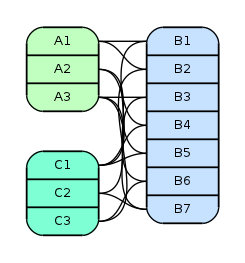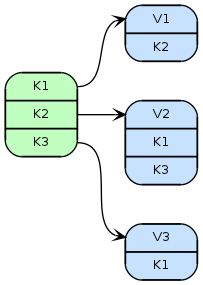A Graph Database stores data structured in the Nodes and Relationships of a graph. How does this compare to other persistence models? Because a graph is a generic structure, let’s compare how a few models would look in a graph.
Topple the stacks of records in a relational database while keeping all the relationships, and you’ll see a graph. Where an RDBMS is optimized for aggregated data, Neo4j is optimized for highly connected data.
A Key-Value model is great for lookups of simple values or lists. When the values are themselves interconnected, you’ve got a graph. Neo4j lets you elaborate the simple data structures into more complex, interconnected data.
Column Family (BigTable-style) databases are an evolution of key-value, using "families" to allow grouping of rows. Stored in a graph, the families could become hierarchical, and the relationships among data becomes explicit.
The container hierarchy of a document database accommodates nice, schema-free data that can easily be represented as a tree. Which is of course a graph. Refer to other documents (or document elements) within that tree and you have a more expressive representation of the same data. When in Neo4j, those relationships are easily navigable.





